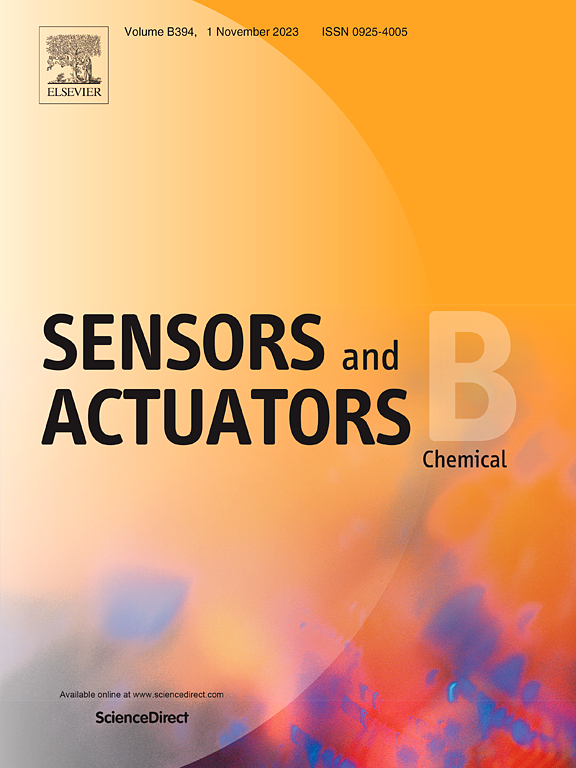Brilliant hollow SiO2-based structural colors for water infiltration, warning and information encoding
IF 8
1区 化学
Q1 CHEMISTRY, ANALYTICAL
引用次数: 0
Abstract
A series of functional stimulus-response indicators based on the multi-color regulation mechanisms of Bragg's law were developed. However, they were basically fast-response and high-sensitivity systems. Herein, this paper introduced a novel approach using slow water infiltration to regulate structural color photonic band gaps (PBG), which was more conducive to temporal monitoring, with applications in water penetration, warning systems, and information encoding. The hollow SiO2 and polyethylene glycol diacrylate (PEGDA) films were employed as structural units, showing that the color-changing ability of the hollow SiO2-based structural color films was negatively correlated with the SiO2 thickness. Additionally, the RGB values were analyzed through images, demonstrating the slow color-changing characteristics of these films. The results indicated that both methods exhibited similar trends, confirming that these two characterization techniques effectively reflected the color change under water infiltration conditions. Furthermore, these bright and water-permeable materials, when used in conjunction with inverse PC structures for synergistic water-induced color-change response tags, were effective for reversible information recognition. Moreover, this type of material possessed excellent water-penetration rate adjustment capabilities, which could further enhance its encryption potential. Therefore, the hollow SiO2-based structural color material was further applied in fields such as large indoor cold storage warehouses and eco-smart aquariums. These tags were able to effectively prevent temperature rise risks in frozen goods due to power outages and served as built-in anti-counterfeiting labels, offering strong anti-counterfeiting capabilities.

明亮的空心sio2结构色,用于水渗透、预警和信息编码
基于布拉格定律的多色调节机制,建立了一系列功能性刺激反应指标。然而,它们基本上是快速反应和高灵敏度的系统。本文提出了一种利用慢水入渗调节结构彩色光子带隙(PBG)的新方法,该方法更有利于时间监测,可应用于水侵、预警系统和信息编码等领域。以空心SiO2和聚乙二醇二丙烯酸酯(PEGDA)薄膜为结构单元,发现空心SiO2基结构彩色薄膜的变色能力与SiO2厚度呈负相关。此外,通过图像分析RGB值,显示了这些电影的缓慢变色特性。结果表明,两种方法呈现出相似的趋势,证实了这两种表征方法有效地反映了水入渗条件下的颜色变化。此外,当这些明亮的透水材料与反向PC结构一起用于协同水诱导颜色变化响应标签时,可以有效地识别可逆信息。此外,这种材料具有良好的水渗透速率调节能力,可以进一步增强其加密潜力。因此,在大型室内冷库仓库、生态智能水族馆等领域,进一步应用了空心sio2基结构着色材料。这些标签可以有效防止冷冻货物因停电而导致的温升风险,并作为内置防伪标签,具有很强的防伪能力。
本文章由计算机程序翻译,如有差异,请以英文原文为准。
求助全文
约1分钟内获得全文
求助全文
来源期刊

Sensors and Actuators B: Chemical
工程技术-电化学
CiteScore
14.60
自引率
11.90%
发文量
1776
审稿时长
3.2 months
期刊介绍:
Sensors & Actuators, B: Chemical is an international journal focused on the research and development of chemical transducers. It covers chemical sensors and biosensors, chemical actuators, and analytical microsystems. The journal is interdisciplinary, aiming to publish original works showcasing substantial advancements beyond the current state of the art in these fields, with practical applicability to solving meaningful analytical problems. Review articles are accepted by invitation from an Editor of the journal.
 求助内容:
求助内容: 应助结果提醒方式:
应助结果提醒方式:


